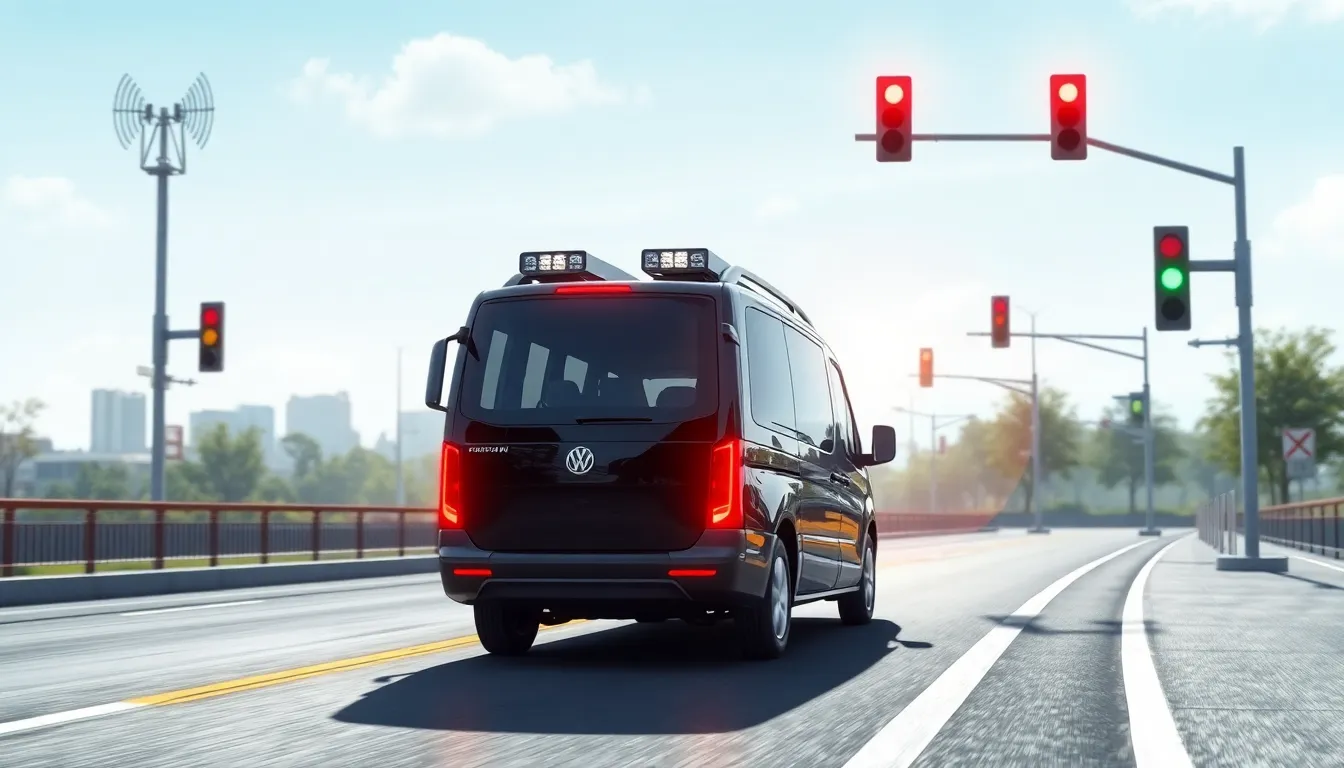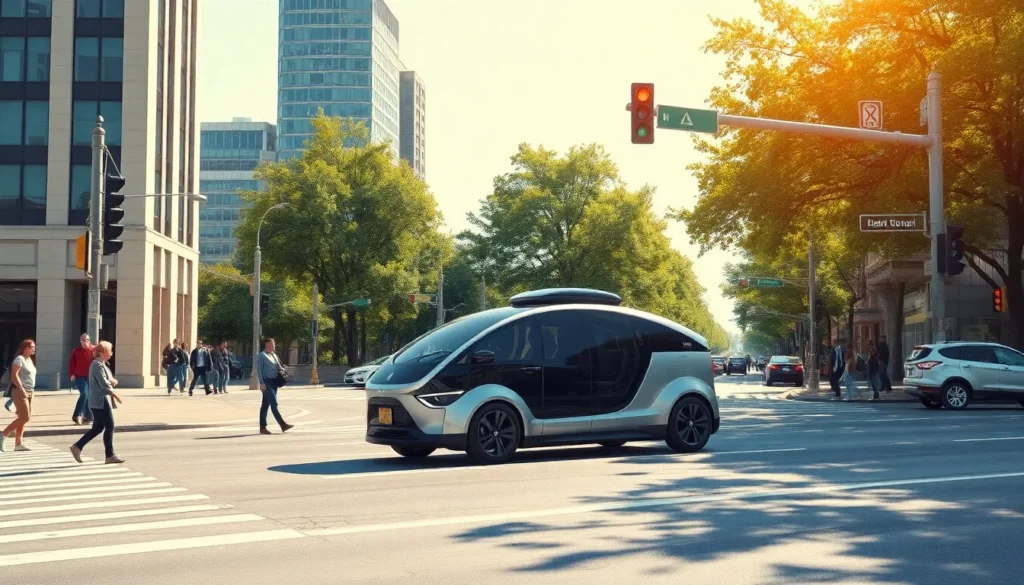Table of Contents
ToggleImagine a world where your car knows when you’re running late and automatically finds the fastest route while your coffee brews itself on the way. Welcome to the age of Internet of Things (IoT) transportation, where vehicles aren’t just metal boxes on wheels but smart companions that make life easier.
Overview of Internet of Things Transportation
Internet of Things (IoT) transportation encompasses the integration of smart technologies into vehicles and transportation systems. This integration creates a network of connected devices that can communicate and share data in real time. Smart vehicles collect data on traffic conditions, weather, and road hazards, allowing them to adapt routes for optimal efficiency.
Connected infrastructure plays a crucial role in IoT transportation. Traffic lights, for example, can adjust their timing based on real-time traffic flow, improving congestion. Public transportation systems can provide accurate arrival times and occupancy levels, enhancing rider experience.
Data analytics enhances decision-making in transportation management. By analyzing transportation patterns, authorities can optimize routes and resources. Cities equipped with IoT-enabled systems can deploy resources dynamically, ensuring efficient service delivery.
Security remains a key concern in IoT transportation. As vehicles connect to the internet, the potential for cyber-attacks increases. Manufacturers prioritize robust security measures to protect user data and maintain trust.
Sustainable transportation solutions benefit significantly from IoT. Electric vehicles can optimize charging times based on grid demand, reducing strain on power resources. Additionally, real-time data helps in routing vehicles that manage fleets, minimizing fuel consumption and emissions.
Consumer applications offer exciting possibilities. Mobile apps connected to IoT devices can display vehicle health information and maintenance alerts. Users can receive notifications about traffic conditions and estimated travel times directly in their hands.
Overall, IoT transportation represents a transformative shift in urban mobility, connecting people, vehicles, and infrastructure. Enhanced efficiencies and improved user experiences are just the beginning of possibilities, as this technology continues to evolve.
Key Components of IoT Transportation

IoT transportation relies on several key components that enable vehicles and infrastructure to communicate effectively. These components enhance efficiency, safety, and user experience.
Sensor Technology
Sensors play a vital role in IoT transportation by gathering real-time data. They monitor various factors, including vehicle speed, tire pressure, and environmental conditions. Vehicles equipped with advanced sensors identify obstacles and track traffic patterns. Each sensor contributes to a vehicle’s overall situational awareness. With this technology, vehicles can adapt to changing road conditions and optimize driving performance.
Communication Networks
Communication networks ensure seamless data exchange between vehicles and infrastructure. Various network types, including cellular, Wi-Fi, and dedicated short-range communications, facilitate this connectivity. Reliable communication allows vehicles to receive updates on traffic signals and road hazards. Integration with smart city infrastructure streamlines the transportation process. Enhanced connectivity enables real-time decision-making, which improves overall safety and efficiency.
Data Analytics
Data analytics empowers transportation authorities to leverage the information collected from vehicles and infrastructure. Analyzing data patterns helps optimize traffic flow and improve emergency response times. They identify trends in vehicle usage, leading to better resource allocation. Transportation agencies can implement adaptive traffic management systems based on insights derived from data. Real-time analytics contribute to creating a more efficient transportation network.
Benefits of IoT in Transportation
IoT in transportation offers numerous advantages that enhance overall mobility. By leveraging connected technology, various transportation systems experience improved functionality and user satisfaction.
Improved Efficiency
Connected vehicles and infrastructure enhance traffic management. Real-time data allows vehicles to adapt to changing conditions, such as accidents or congestion, promoting smoother travel. Sensor technology provides accurate information on traffic patterns, enabling transportation authorities to optimize signal timings. For instance, smart traffic lights adjust based on real-time vehicle flow. Fleet management systems streamline logistics by tracking vehicle locations and statuses, leading to more efficient operations. Transportation companies benefit from reduced delays and improved service delivery, ultimately enhancing customer experiences.
Enhanced Safety
IoT significantly improves vehicle safety features. Advanced sensors gather crucial data on road conditions, detecting obstacles or hazards that vehicles may encounter. Connected systems enable instant alerts to drivers about potential dangers. Car manufacturers incorporate automated emergency braking and collision avoidance systems based on real-time data inputs. Moreover, smart infrastructure contributes to safety by monitoring traffic patterns and responding to changing conditions. This interconnected ecosystem reduces the likelihood of accidents, fostering a safer driving environment for everyone.
Cost Savings
Cost savings emerge as a prominent benefit of IoT in transportation. Fleet operators realize reduced operational expenses through efficient route planning and maintenance optimization. Predictive analytics identify potential vehicle issues before they escalate, minimizing repair costs. Insurance premiums may also decrease as safer driving behaviors develop, resulting in fewer accidents. Additionally, smart systems optimize fuel efficiency by adjusting driving patterns and monitoring tire pressure. Organizations that implement IoT technologies experience significant savings, contributing to a more sustainable transportation network.
Challenges in Implementing IoT Transportation
Implementing IoT transportation presents several challenges that need addressing for effective integration.
Data Security Concerns
Data security emerges as a significant issue in IoT transportation. The interconnected nature of vehicles and infrastructure exposes them to potential cyber threats. Hackers may manipulate vehicle controls or access sensitive user information. Manufacturers must invest in advanced encryption methods and regular security updates to safeguard against attacks. Additionally, developing secure communication channels helps maintain data integrity. Transport authorities must also educate users about cybersecurity measures to enhance awareness and foster safer practices.
Infrastructure Limitations
Infrastructure limitations pose another challenge for IoT transportation. Many existing systems require significant upgrades to accommodate smart technologies. Energy constraints in older infrastructure often hinder the implementation of IoT solutions. Local governments may face budgetary restrictions that slow advancement in smart city projects. Integration with legacy systems complicates the deployment of new technologies, limiting overall effectiveness. Enhanced collaboration between public and private sectors can drive improvements and create robust transportation networks.
Future Trends in IoT Transportation
The future of IoT transportation promises significant innovations that reshape urban mobility. Emerging trends show how smart technologies will play a vital role in enhancing transportation systems.
Smart Cities
Smart cities leverage IoT technology to improve transportation efficiency. Sensors gather crucial data on traffic patterns, pedestrian movement, and environmental conditions. Real-time analytics allow city planners to optimize traffic flow, adjust signal timings, and reduce congestion. Data from connected vehicles enhances public transit services by providing updates on arrival times and route adjustments. These innovations not only improve commute times but also promote sustainability through reduced emissions. Collaboration between local governments and tech companies drives the integration of these smart technologies in urban planning.
Autonomous Vehicles
Autonomous vehicles represent a significant advancement in IoT transportation. Equipped with advanced sensor technologies, these vehicles can detect obstacles, navigate traffic, and respond to changing conditions. Real-time data from connected infrastructure enhances their decision-making ability. Communication with other vehicles minimizes the risk of collisions. Additionally, manufacturers focus on developing robust safety features to address public concerns. The evolution of regulatory frameworks also supports the deployment of autonomous technologies. Once fully integrated, these vehicles will transform commutes, offering greater convenience and efficiency in urban settings.
The future of IoT transportation is poised to redefine urban mobility. By integrating smart technologies into vehicles and infrastructure, it enhances efficiency and safety while promoting sustainability. The potential for real-time data sharing creates a more connected and responsive transportation ecosystem.
As manufacturers prioritize security and infrastructure improvements, the path toward smart cities and autonomous vehicles becomes clearer. Collaboration between public and private sectors will be essential in overcoming challenges and maximizing the benefits of IoT in transportation. The advancements in this field promise to transform daily commutes into seamless and enjoyable experiences.







